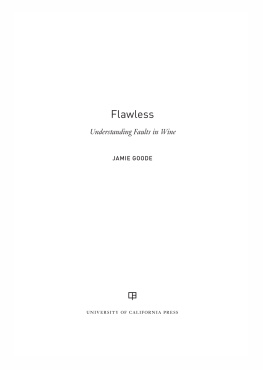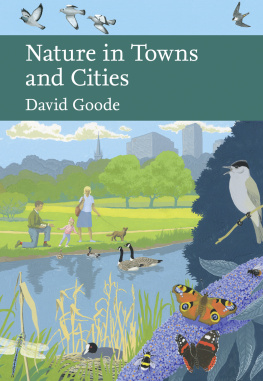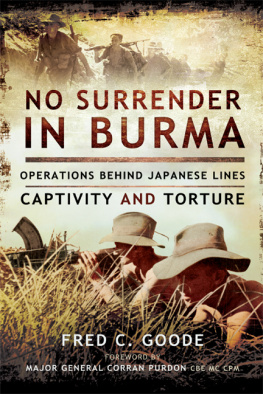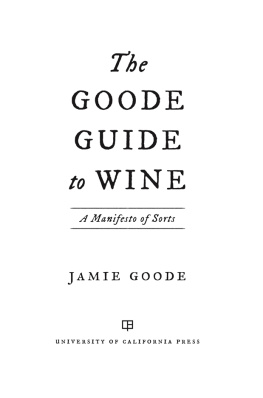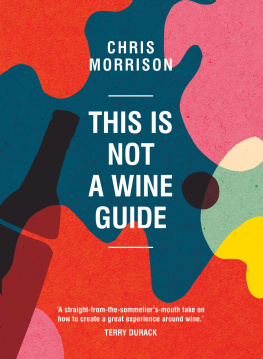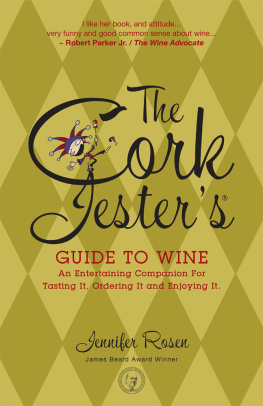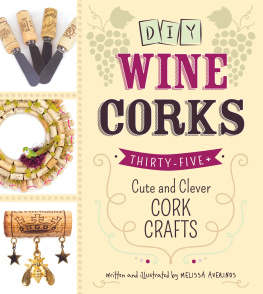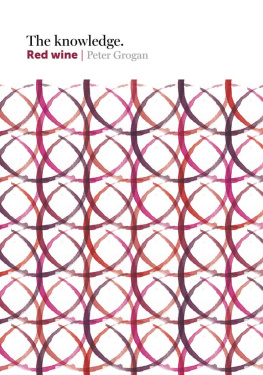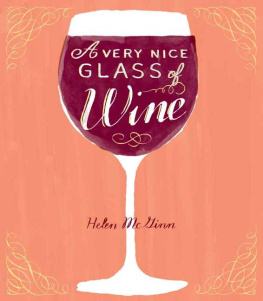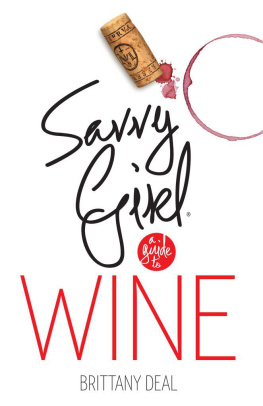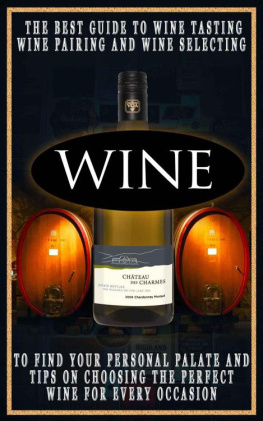Acknowledgments
Many people have contributed ideas to this book. First, Id like to thank Sam Harrop MW, a long-time collaborator. When I was just starting out in wine writing in the early noughties, Sam gave me a lead on the growing trend of toying with reductive characters to increase wine complexity. This was all very new, and I began researching and writing about it. Some years later, we decided wed like to write a book together on wine faults. Sam, however, is in great demand as a consultant winemaker, and the project faltered, but not until the title of the book was chosen (it was Sams idea) and the concept of wabi sabi taking a more nuanced, thoughtful look at wine faultswas established as a philosophical underpinning to this complex topic. Without Sam this book wouldnt exist, and Im grateful for his significant input to the development of some of the ideas here.
Second, Id like to thank the staff at the Australian Wine Research Insititute (AWRI)in particular Peter Godden, who reviewed the manuscript for UC Pressfor the assistance they have given me. Ive visited the AWRI a few times over the years, and Ive always been impressed by the quality of their research and by how practical and topical it is. A lot of wine research is worthy but not always that relevant to the production of interesting wine, but theirs is goal focused and has made a very positive contribution to helping winemakers across Australia make better wines. Im grateful to all the AWRI staff whove given their time to speak to me.
Id also like to thank the team at Lallemand, a forward-thinking yeast and bacteria company. For the last few years, I have been part of their consultant group that meets to discuss new product development and various aspects of microbial wine science. Through this group I have learned a lot. (Conflict-of-interest disclosure: I am paid for my time participating in these meetings and for presenting lectures at Lallemand-sponsored events.)
As a wine journalist and communicator, I spend a lot of time on the road visiting wine regions. Its through the openness and generosity of winegrowers around the world, who are prepared to give up substantial chunks of time to let me see what they are up to, that I have been able to learn so much and to develop the context that puts the insights of wine science into appropriate perspective. This sort of context is extremely valuable. It needs to be remembered that theres only so much funding for science and that, because of the complexity of wine, the experiences and anecdotal observations of keen winegrowers are extremely useful. I would like to thank all those who have generously allowed me to invade their cellars and vineyards and who have been open to sharing their insights.
Thanks also to Chris Ashton and the team at the International Wine Challenge, where I have been a panel chair and more recently a cochair for several years now. The experience of tasting so many wines, and latterly of reviewing all the wines declared faulty by the tasting tables, has been invaluable.
I am also grateful to those who have given extended interviews, including but not limited to Andrew Waterhouse (who read and commented on the chapter on oxidation), Roger Boulton, Adrian Coulter, Dominique Delteil, and Maurizio Ugliano. I thank the scientists in New Zealand who allowed me to interview them while I was working on a project on the science of Sauvignon Blancmany of their insights were relevant to this book.
Thanks to Belinda Kemp of Cool Climate Oenology and Viticulture Institute (CCOVI), Brock University, Canada for reading and commenting on the manuscript at peer review stage. Her suggestions were very useful and improved the text.
As a freelance wine communicator, I depend on the people who believe in me enough to commission work, to hire me to talk or judge wine, and to sponsor wineanorak.com, my website. Naturally, Im thankful to all those who pay me cash! It is much appreciated.
Finally, thank you to all at UC Press for doing such a good job. No book is perfect, but the peer-review and editing process made this a much better book than it would otherwise have been. Every author needs a good editor.
CHAPTER ONE
Introduction
Wine is complicated. Almost impossibly so.
Its the result of microbial fermentation, guided by human hands, based on a natural starting product thats harvested once a year. The grapes differ markedly from season to season, and the nature of the vineyard sitethe soil and climate the grape vine grows indiffers markedly over a short distance. Differences in geography and grape variety, compounded by human choices, result in a bewildering array of commercial wines. Theres no product quite like it.
Because of the variability in the starting materialthe grapes and microbeswinemakers cant easily follow a formula. They need to make the appropriate choices and interventions during the winemaking process in order to produce a marketable wine they are proud to stand behind. Commercial and market considerations often enter the fray. Its not a simple process.
Because nature and chance play such a significant role in wine production, its not surprising that wine quality varies. And sometimes wines are faulty. The incidence of wines declared by professionals to be faulty in major competitions such as the International Wine Challenge is unacceptably high and probably wouldnt be tolerated in any other industry. And these are wines that have made it all the way to bottle. Its impossible to be sure how many faulty wines are consumed each year; its likely that most of these are drunk, but not enjoyed, without the consumer realizing that the wine isnt supposed to taste this way.
Hence this book. It may seem a little negative to write a book on wine faults. After all, who likes to focus on flaws or errors? Does it mean the book will be a bit of a downer? Will its sales stagnate, even if it should prove to be an important text, simply because people are turned off by the term fault?
I hope not, and I deliberately chose the title Flawless to emphasize the positive. The absence of flaws may not actually be a positive quality in itself, but flaws prevent positive attributes of a wine from being enjoyed. It is by avoiding flaws that winemakers are free to achieve their goal. Beauty is marred by flaws, so their avoidance is a worthy aspiration. But the reality is a little more layered and complex than this. Sometimes, small levels of what might at higher levels be fault compounds can help beauty express itselfa theme I will return to several times in this book.

